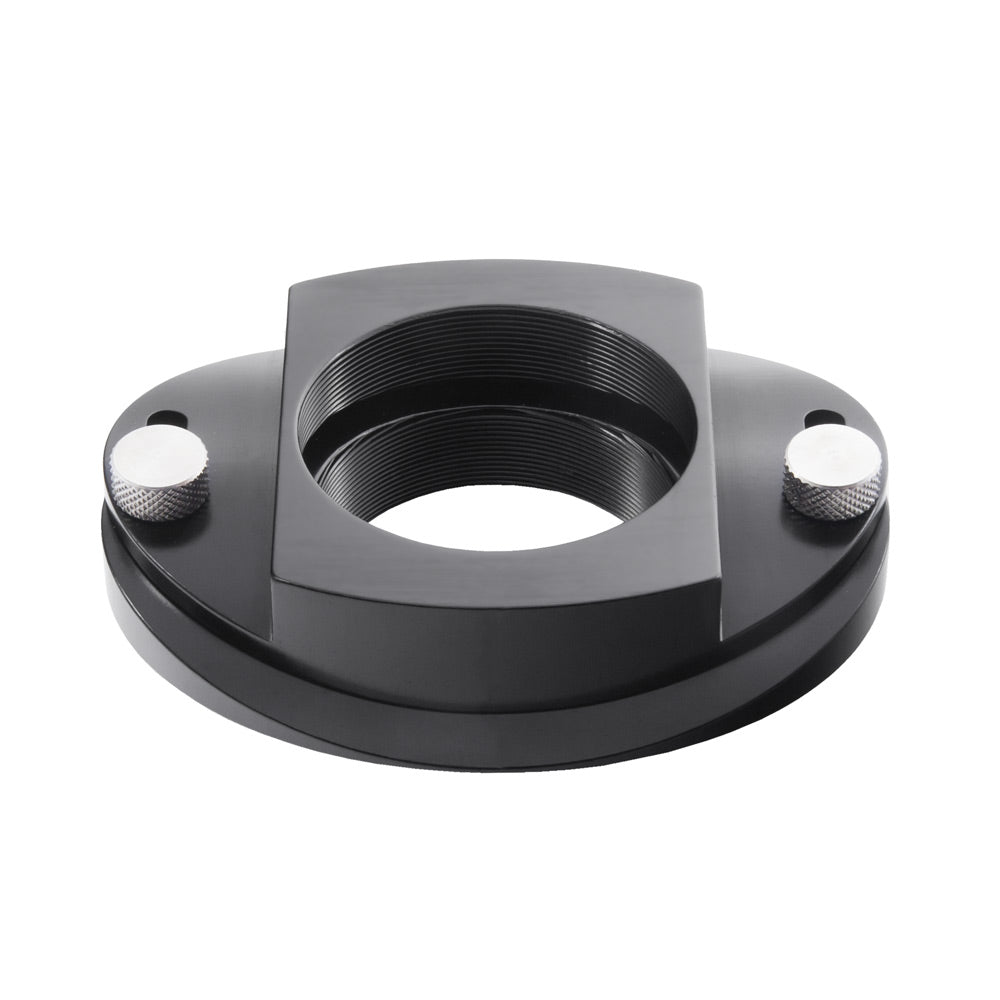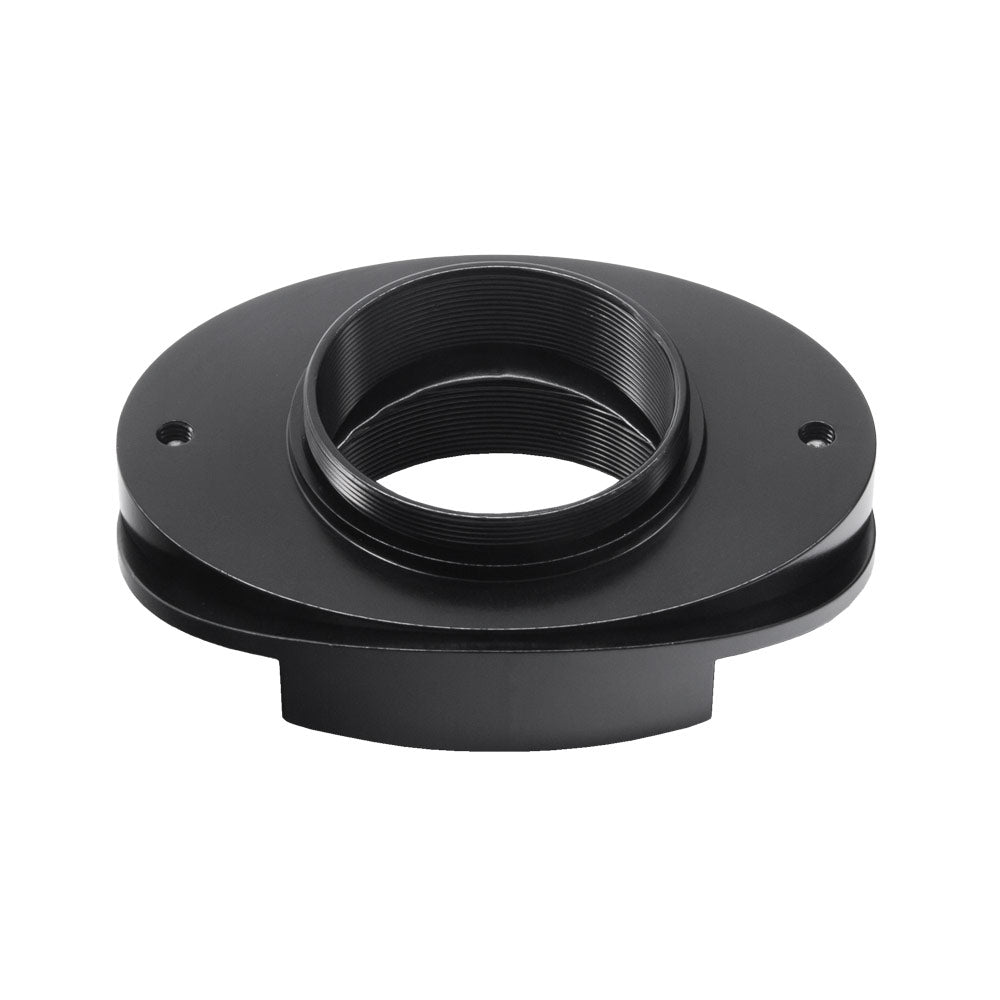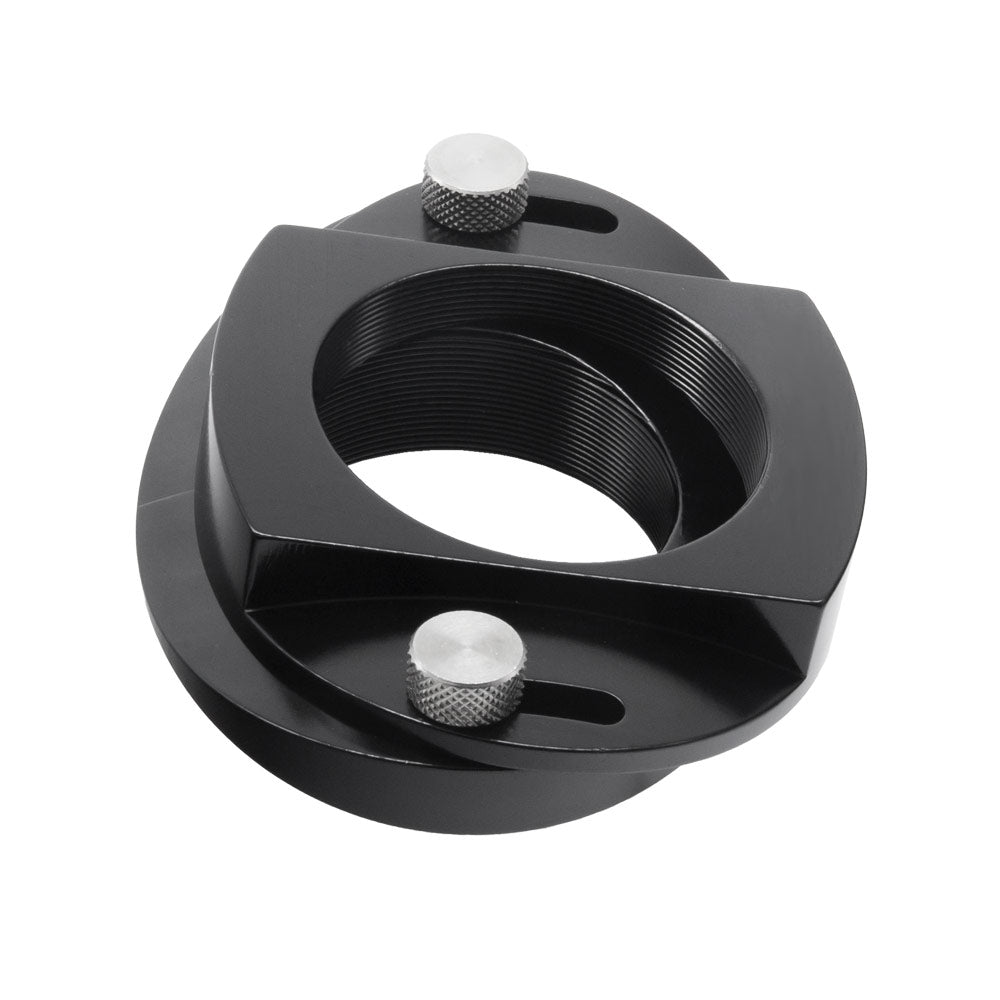DAYSTAR T-MOUNT INTERFERENCE ELIMINATOR
Daystar
DAYSTAR T-MOUNT INTERFERENCE ELIMINATOR is backordered and will ship as soon as it is back in stock.
The DayStar Interference Eliminator is a useful photographic accessory for removing Newton's Rings, a common interference pattern encountered in solar imaging with electronic sensors. Attaches to a standard T ring.
In long focal ratio applications, the nearly parallel light can internally reflect inside the image sensor or camera, causing an addition or subtraction of the light waves, resulting in the observed pattern.
The Interference Eliminator solves this problem by tilting the camera off normal while keeping the center of the image sensor stationary, so that focus, framing, and vignetting are not changed with the tilt. The tilt changes the angle of incidence and optical path lengths inside the image sensor, mitigating the interference.

Specifications
| Thread |
Male/Female T thread, M42 x 0.75 |
|---|---|
| Additional backfocus required | 15 mm |
| Recommended distance to focal plane |
55 mm from male T flange (Exact for Canon/Nikon DSLR cameras with standard T ring) |
| Range of motion | +/- 5 degrees |
| Weight | 100 g |
| Maximum camera weight | 3.5 kg |
| Material | CNC machined aluminium |
| Dimensions | 60 x 83 mm, 22 mm thick |
| SKU | DS-MG0408 |
Instructions
Installation
The Interference Eliminator should be placed directly in front of the camera in the optical train. For proper operation, the distance from the flange of the male T thread to the camera focal plane should be 55mm.
On a DSLR with a T ring, no spacers are required, the T ring sets the distance to 55mm. On a CCD camera or Webcam, male to female T ring spacers may be required to bring the distance to 55mm.
If the distance is significantly different from 55mm, the camera will move off boresight and the focus position will shift while adjusting the Interference Eliminator tilt setting.
Use
Slightly loosen the thumbscrews and slide the two halves of the Interference Eliminator apart, such that the camera tilts. Take a few images with the camera to check for the interference pattern. Slide further apart if the pattern is still evident. Tilt it the minimum amount to eliminate fringes - too far and focus could be lost at the top and bottom of the image, especially in fast focal ratio systems. If maximum tilt is reached without satisfactory effect, try full tilt in the opposite direction.
In some severe instances the interference pattern may not be completely removable, but it will be reduced to where other techniques such as flatfielding or compositing can make the image acceptable.
Note: On large sensors such as full frame 36x24mm DSLR cameras, some vignetting is possible at full tilt due to the camera structure and the inside diameter of the T thread. For an example of a full frame Canon EOS 5D image at full tilt, click here. With webcams or 1.5-1.6x crop digital SLRs no vignetting will occur.







